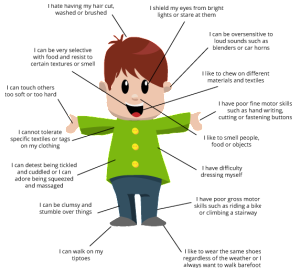
Sometimes common words are used to describe medical conditions. “Overweight” is actually used as a measurement, between “normal” and “obese”. By contrast, sometimes exotic words are used to describe common experiences, such as PreMenstrual Dysphoria Dysfunction (PMDD). (Yes, you can read between the lines on that one.)
There are lesser-known diagnoses or descriptions of behaviors that are outside the norm. We’ve all heard of “Gifted”, “Gifted and Talented Education” (GATE), and possibly “Highly Gifted,” but there are actual criteria for meeting this designation, such as scoring above 130 on an intelligence test such as the Wechsler Intelligence Scale for Children (WISC). A similar term, “Twice Exceptional” or 2E, refers to people who are both Gifted AND have a learning disability, such as ADHD, autism, dyslexia, etc. Some of these terms are not formal medical or educational diagnoses, but they are “a thing” and contribute to behavior and learning difficulties.
I’ve recently come across a new-to-me definition, the “Highly Sensitive Person”. This definition comes from Dr. Elaine Aron and from Lauren Brukner’s book, The Kids’ Guide to Staying Awesome and In Control. It deals with Sensory Processing, and it affects a lot of people with ADHD.
 We can intuit what Sensory Processing means: how do we perceive sounds, sight, smells, taste and touch. We assume there are norms for this, and understand that some people are very sensitive to specific sensory input. With Sensory Processing Disorder, described by Carol Kranowitz, author of The Out-of-Sync Child series, we learn that there are clusters of over-stimulation or under-stimulation of nerve cells that can result in difficult behaviors. Many children on the autism spectrum have hyper-sensitive responses to light, to some foods, to tags on the collars on their clothing. See this article for an overview of SPD: https://www.additudemag.com/adhd-web/article/11394.html
We can intuit what Sensory Processing means: how do we perceive sounds, sight, smells, taste and touch. We assume there are norms for this, and understand that some people are very sensitive to specific sensory input. With Sensory Processing Disorder, described by Carol Kranowitz, author of The Out-of-Sync Child series, we learn that there are clusters of over-stimulation or under-stimulation of nerve cells that can result in difficult behaviors. Many children on the autism spectrum have hyper-sensitive responses to light, to some foods, to tags on the collars on their clothing. See this article for an overview of SPD: https://www.additudemag.com/adhd-web/article/11394.html
As reported by Kranowitz on a recent broadcast about SPD, a study done with 2,400 students showed that 7.5% presented with attention problems. Of this subgroup (180 students), 40% had ADHD, 20% had Sensory Processing Disorder (SPD), and 40% had both ADHD and SPD.
Generally speaking, the people with ADHD and SPD craved sensory input. They want to turn every piece of furniture into a ladder; they want to stuff their mouths with popcorn; they want to see how loud something can go. Their sense of “normal input” is shifted over to what typical people would perceive as an extreme response.
So what do you do about it? You can make calm, gentle reminders that your child’s behavior is too loud or too boisterous; you can remind them of the difference between inside voices and outside voices. You can become sensitive to your child’s different range of experiencing the world, and teach them that it’s a relative concept.
As kids get older, and hopefully somewhat better at regulating their behavior, there are other methods of soothing oneself, of coming more into the typical range of behavior, especially in a school setting. A friend passed this wonderful webpage on to me, and I’d like to share it as a DIY we can teach to our children:
The first suggestion, the Hand Massage, is so simple that I can see some of our friends with ADHD doing it too hard! Hand-rubs are soothing, and can be done when sitting at a desk (maybe for too long). You can teach your child this technique, noting that you don’t have to press too hard to get the soothing effects.
 For some kids, they may need an external list that they keep on their desks to remind them that they may need to regulate themselves, particularly during tedious times when you are stuck at a desk. Probably doing “Superman Pose” isn’t possible in a high school classroom, but many of the other suggestions are appropriate and helpful!
For some kids, they may need an external list that they keep on their desks to remind them that they may need to regulate themselves, particularly during tedious times when you are stuck at a desk. Probably doing “Superman Pose” isn’t possible in a high school classroom, but many of the other suggestions are appropriate and helpful!